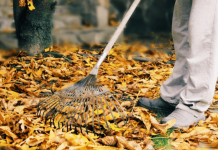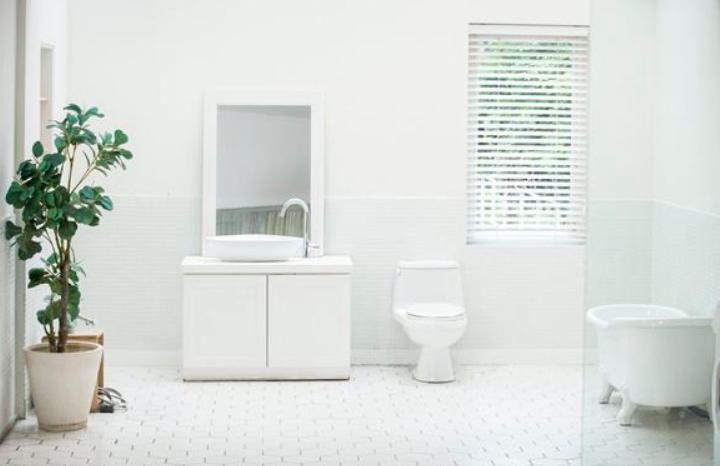Detergent
Soft dishwashing soap is a surprisingly good floor cleaner. All you need is 1-2 tablespoons of dishwashing detergent mixed with a bucket of water. The floor is clean and you don’t need to put a shine on it.

Dishwashing soap is great for resilient floors like linoleum and vinyl, as well as ceramic tile. However, do not use soap and water to wash hardwood floors. Moisture can cause stains and warping. If you have plastic laminate, follow the manufacturer’s cleaning recommendations. Most laminates are cautioned against exposure to excessive moisture.
Detergent for washing

Oil-based stains on fabrics are more difficult to remove. Detergent is one of the best stain removers for this task. Rub soap thoroughly into oil-based stains, then rinse them off with the hottest water safe for your type of fabric.
Dish soap works especially well on cooking oils, such as salad dressings, and is gentle enough on fine fabrics like silk and wool.
If you don’t have a special detergent on hand with a washcloth, carefully hand wash fine fabrics such as wool and silk using a teaspoon and 1 gallon of water. Place the fabric item in the solution and immerse it completely in the water. Then gently shake the item with your hands for 1 minute. Then rinse the item in clean, cold water.
Cleaning the table in the kitchen

For many common surfaces in the home, you can use dishwashing detergent as a detergent. A mild dishwashing detergent works well on countertops, baseboards, window sills and many other surfaces.
An easy way to apply is to pour a small amount of dishwashing detergent into a sprayer filled with warm water. Wipe and scrub the surface thoroughly, then rinse with a damp cloth and dry the surface.
Cleaning the blinds

Metal blinds are awkward to clean because dust settles on them and they need to be cleaned with every movement. It may not be your favorite job, but you can make it easier by using a mixture of dishwashing detergent and water, which is one of the best options for cleaning blinds.
The main difficulty is that there are a lot of slats, and you need to thoroughly clean each one of them of dust and grease droplets. It is not always convenient to remove them from the window for major cleaning.
Cleaning the glass

You can use diluted dishwashing detergent to clean glass surfaces, but it works best on very dirty glass. Try washing the glass thoroughly with diluted dishwashing detergent before using glass cleaner again. If you use dishwashing detergent, you may not need glass cleaner.
Sure, you can grab a damp rag and wipe down the glass, but you still want the surface to be not just washed, but scrubbed to a shine!
Detergents for glass surfaces are best applied with a washcloth. Then rub the liquid all over the glass surface.
Degreasing the kitchen cabinet

Cabinets occupy the most prominent place in any kitchen. Of course, you can replace the cabinets, but that’s an expensive undertaking.
An abandoned kitchen cabinet is a big problem to clean. Oil and grease in the kitchen mix with smoke, dust and other kitchen contaminants and form a thick, sticky layer on the kitchen cabinets. Kitchen soap and regular wipes are your first line of defense against this buildup. Mix 2 tablespoons of dishwashing detergent in warm water to create a detergent solution for your cabinets.
The same surfactant that removes grease on the plate removes grease from the surface of the cabinet as well.
Surface cleaning

Patio furniture: You can clean plastic or metal garden furniture using a small amount of detergent in a basin of warm water. After cleaning, rinse the outdoor furniture with a garden hose and lightly wipe it down with a scratch-free nylon mat. This method works well for plastic or metal furniture, but do not use soap to clean teak wood or other wooden furniture.
Barbecue grills: thoroughly mix dish soap with warm water, then use this solution to wipe grease residue off the walls of the grill and discard the burner. Rinse the grill thoroughly before using it again.
Kitchen stoves: Oil and antifreeze stains on garage stoves or driveways can be removed by pouring baking soda on the stain and then pouring it over with undiluted dishwashing detergent. Scrub the stain with a plastic brush and leave it for several hours. Rinse the stain and, if necessary, repeat several times until the stain is gone.
Jewelry Cleaning

Gold jewelry usually changes its appearance due to oxidation of alloying additives – metals that are added to soft gold to increase its hardness. Oxidation occurs more quickly if you are regularly exposed to high temperatures, such as wearing a gold ring in the sauna, at the beach, or just in the sun.
Contact with cosmetics, perfume, household chemicals, chlorinated water, and perspiration also oxidizes the metal. Over time, sweat forms a film on the gold, on which dust settles and creates a darkening effect.
Mix a small amount of dishwashing detergent and baking soda in a bowl of water, then immerse the soiled jewelry in the solution for about 5 minutes, slowly stirring the mixture. You can use a soft toothbrush to remove the dirt.
Personal Hygiene

Dish soap is mild enough that it can be used in place of shampoo and body wash. A favorite trick of campers is to take a small bottle of soap with you to meet all your cleaning needs. Use dish detergent the same way you would use liquid soap. Fill your palm with water and apply to your scalp or body.
Natural hair oils and cosmetics accumulated on brushes and combs can be removed by soaking them in warm water with dish soap for an hour or so.
Removing stains from carpet
Many carpet stains can be removed with a dishwashing solution. Mix a tablespoon of dishwashing detergent with 2 cups of warm water, then apply the solution to a clean cloth and apply to the stain. Repeat this process until the stain is completely removed from the carpet, then rinse the stain with cold water. Gently blot dry areas with a cloth or paper towel.
Stains from alcoholic beverages: beer, vodka, liquor can be removed with a simple solution of warm water and dishwashing detergent, after which the stained surface should be treated with at least a simple solution of 1 teaspoon of vinegar and 1 liter of water.








